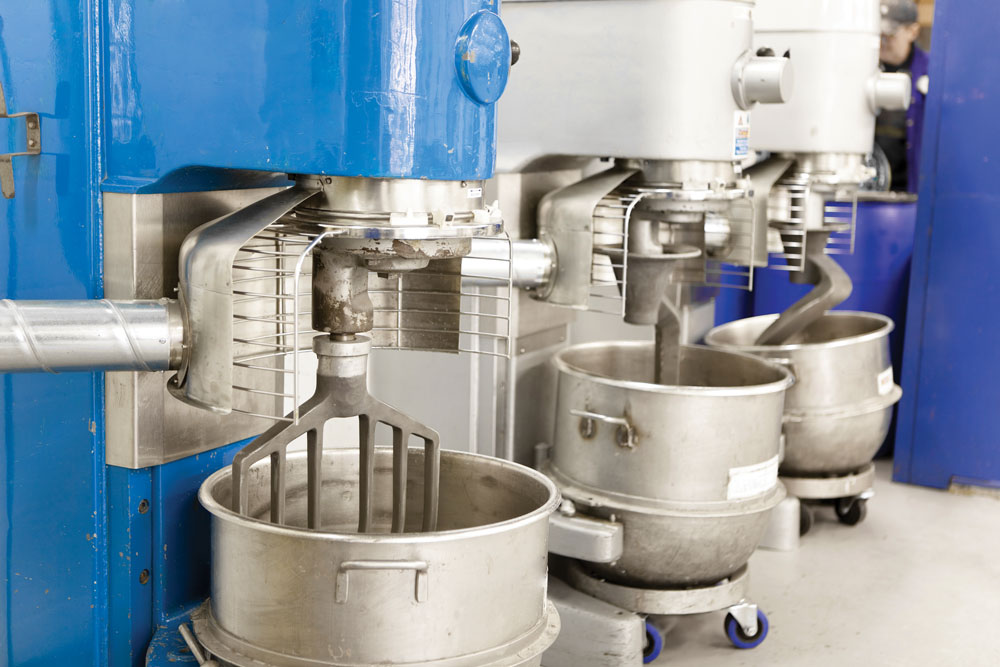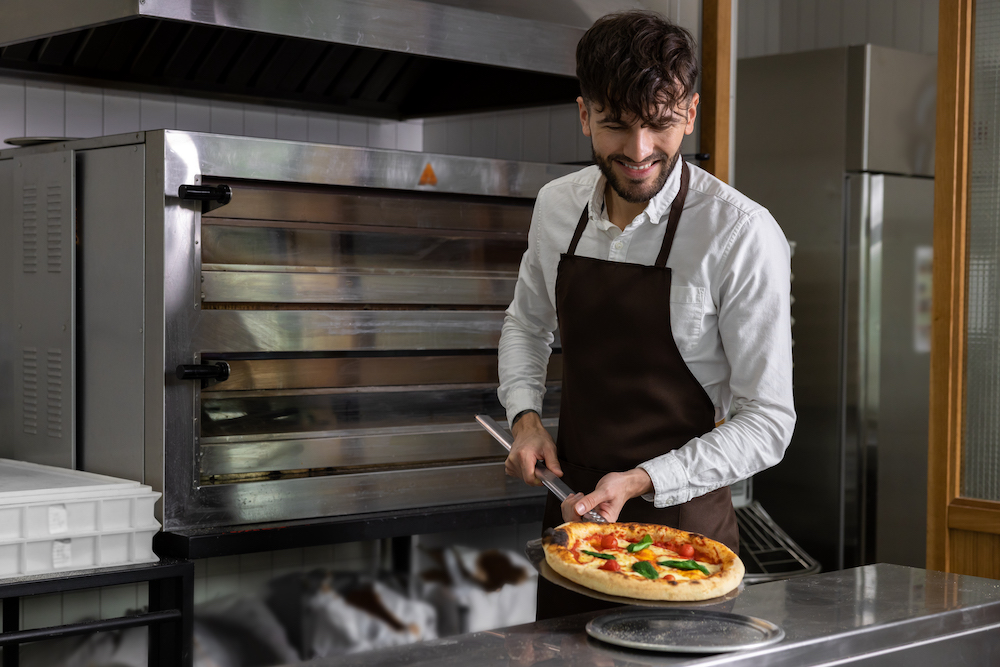By Tracy Morin
In a busy pizzeria, a few key investments are the true cornerstones of your kitchen. One of those must-haves for serving pies to the masses is the commercial mixer. This piece of equipment earns its place as a workhorse in any operation, whether you’re using it to mix pizza dough only, or to also tackle other necessary tasks, like mixing meatballs or cake batter, grating cheese, or slicing veggies.
In fact, those kinds of determinations are exactly what will most impact your mixer selection. “In a nutshell, the choice between a spiral and planetary mixer depends heavily on your kitchen’s primary mixing needs,” says Norah Clark, Honolulu-based pastry chef and owner of YummyTasteFood. “Both spiral and planetary mixers have their own unique advantages and are used for different types of mixing tasks in the kitchen.” Let’s dig into the differences, capabilities, pros and cons of these two important pizzeria partners.
Related: Getting the most out of your dough mixer
Pros and Cons
As Clark notes, choosing between spiral and planetary mixers depends on what you’re looking to mix. “Spiral mixers, named for their spiral-shaped agitators, are champions when it comes to kneading dough—the rotating bowl and spiral hook simulate hand kneading, resulting in a superior dough texture—but they aren’t as versatile as their planetary counterparts,” she explains. “On the other hand, planetary mixers, named for their motion (which resembles planets orbiting the sun), come with various attachments, like a flat beater for mixing cake batter, a wire whip for cream or egg whites, and a dough hook. This makes them ideal for kitchens that need to perform a variety of mixing tasks, but they might not give you the same perfect dough that a spiral mixer can.”
Louie Bossi, owner of Louie Bossi’s Ristorante, Pizzeria and Bar, with two locations in Fort Lauderdale and Boca Raton, Florida, believes that, in his type of full-service operation, every kitchen needs a planetary mixer, but not every kitchen needs a spiral mixer. “A spiral mixer is essential to making a good pizza dough and artisan bread; it’s a gentler mixer, with the bowl and the hook turning at a faster speed and with less heat and friction, giving you an airier dough,” Bossi says. “A planetary mixer is a workhorse that holds from 10 quarts up to 80 quarts. We use it for more bulk kitchen recipes, such as meatball mix and all other non-fragile recipes. The cons are that the spiral mixer doesn’t fit as much, and it’s harder to clean, while the planetary mixer is rougher, causing more heat and friction, but it lasts forever.”

While restaurant and pizzeria owner Louie Bossi advocates a spiral mixer for dough, he uses a planetary type for recipes like meatballs at his full-service operation. Photo by Inhouse Creative.
“A spiral mixer is essential to making a good pizza dough and artisan bread.”
— Louie Bossi, Louie Bossi’s Ristorante, Pizzeria and Bar

Photo courtesy Thunderbird.
Melissa Wasserman Baker, owner of FoodQueries.com and chef at Mateo’s Pizza in Cairo, New York, agrees that spiral mixers are ideal for the heavy-duty dough mixing required for recipes like bread and pizza dough. That’s because the spiral-shaped agitator and rotating bowl both help ensure thorough and consistent mixing, which results in a well-developed gluten structure. However, spiral types tend to be larger, requiring more space in the pizzeria kitchen. “Planetary mixers, on the other hand, offer versatility and precise control,” Wasserman Baker adds. “With a stationary bowl and a revolving agitator, they’re suitable for various mixing tasks, including doughs, batters and lighter mixtures. They’re especially great for delicate recipes like cakes and mousses, providing excellent aeration and control.”
Choosing and Using
Casey Bumpsteed, food writer, chef and editor of Ceramic Cookware Review in Durban, South Africa, admits that the world of mixers can be intimidating, thanks to the myriad of types and brands available today. But she says it’s a matter of evaluating your priorities at the pizzeria. “It feels fantastic to knead a dough just right for that perfect loaf of bread, and that’s where the spiral mixer comes into play—its unique spiral design mixes dough in a way that is gentle yet efficient, keeping the gluten structure intact for that perfect rise. The flip side is, it’s a one-trick pony and limited to just dough.”

Photo courtesy Getty Images.
“Planetary mixers…offer versatility and precise control….They’re especially great for delicate recipes like cakes and mousses, providing excellent aeration and control.”
— Melissa Wasserman Baker, Mateo’s Pizza
However, Bumpsteed calls the planetary mixer “the Swiss Army knife of the mixer world,” since it can knead, whip, mix—you name it. Just make sure to inquire about the mixer’s available attachments to ascertain what will best fit your needs. “The variety of attachments you can use makes the planetary mixer versatile and flexible for an array of tasks, making it a mainstay in any well-equipped kitchen,” Bumpsteed says. “However, it doesn’t quite have the same finesse for dough as a spiral mixer. I once tried to make a batch of croissants with it, and they came out a bit tougher than I’d have liked.” In other words, if breads, doughs and pastries are your main gig, you can’t beat a spiral mixer. But if you’re into a wider range of culinary adventures, a planetary mixer might be your best bet.
Related: A newcomer’s guide to pizza dough equipment
Once you’ve landed your ideal mixing machine, how can you get the most out of your spiral and/or planetary models? Bumpsteed notes that both of these mixers require a bit of a learning curve. “With spiral mixers, remember: Slow and steady wins the race,” she recommends. “A lower speed helps develop the gluten structure in the dough more efficiently. On the other hand, with planetary mixers, it’s all about adapting to the task at hand. Lighter tasks like creaming butter and sugar? Go for a higher speed. Mixing a dough? Dial it back to prevent overworking.”
Ultimately, she advises, take into account the fact that, like with any piece of kitchen equipment, it’s important to understand and respect the machine’s capabilities and limitations. “There’s no one-size-fits-all when it comes to mixers (or cooking, for that matter),” Bumpsteed says. “What works for one person may not work for another. Most important is the joy of learning, experimenting and finding what works best for you.”
Tracy Morin is PMQ’s senior copy editor.













